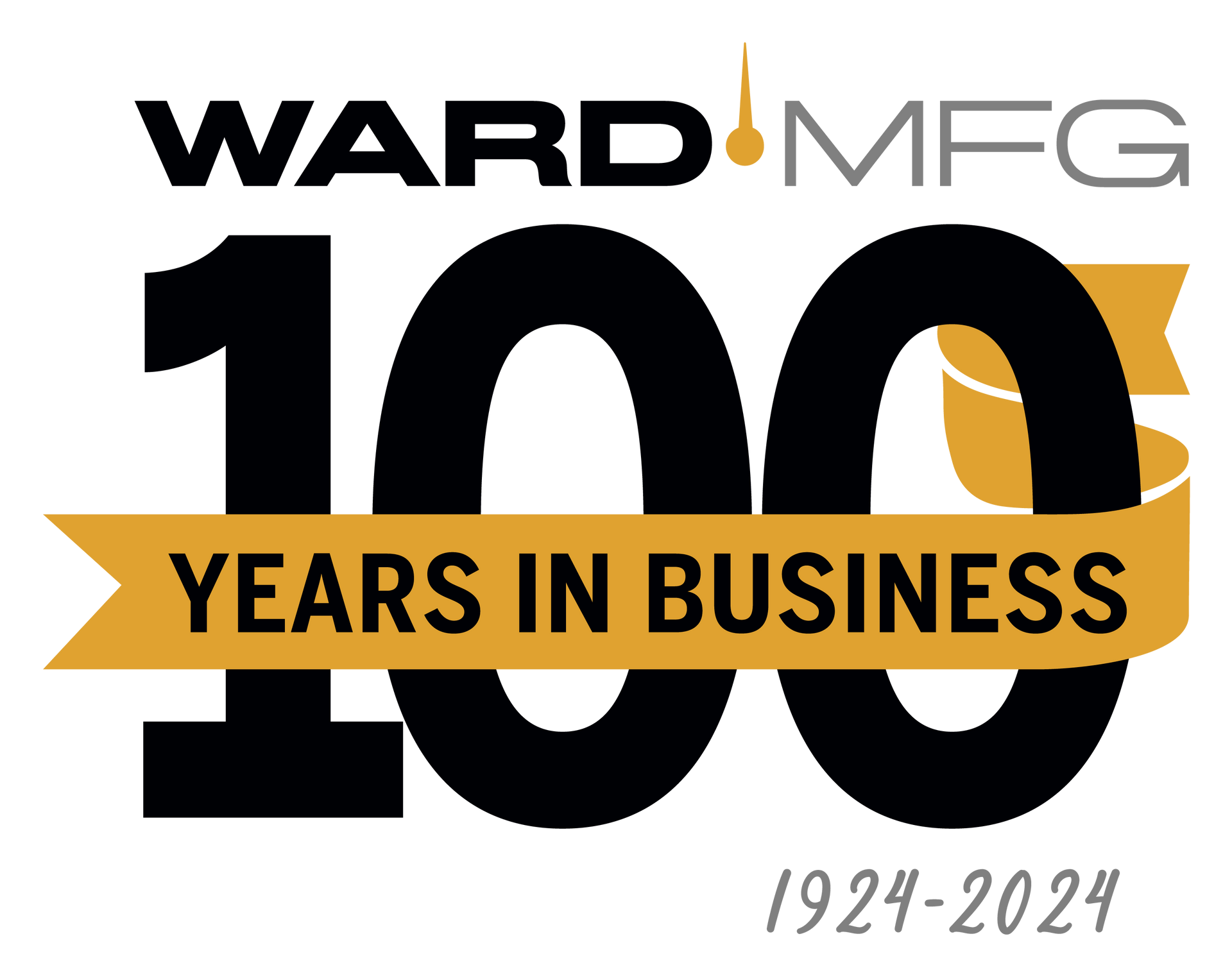FAQs
WARDFlex® Tubing FAQs
-
Can WARDFlex® be buried underground?
WARDFlex®/WARDFlex®MAX may be installed underground in/under a concrete slab when routed through a non-metallic, watertight conduit such as PVC pipe. The conduit used for protection must have an I.D. 1/2” larger than the O.D of the CSST. No fittings are permitted inside the conduit.
-
Can WARDFlex® be installed outdoors?
WARDFlex® CSST products are approved by CSA/ANSI LC-1 CSA 6.26 for outdoor installation.
*WARDFlex® fittings must be protected from the weather by being wrapped with self-fusing silicone tape or have shrink sleeves applied around the entire assembly.
*When installed outdoors between grade and six feet above WARDFlex® must be protected inside non-metallic conduit or installed in a location where it will not be subjected to mechanical damage.
-
What pressure can WARDFlex® be tested at?
Maximum test pressures recommended for all WARDFlex® and WARDFlex®MAX sizes is 40 PSI.
-
Can I mix and match system components with other brands of CSST?
Only WARDFlex® components may be used in the system. Components from other CSST systems are not interchangeable.
-
Where can I purchase WARDFlex®?
Trained installers can purchase the WARDFlex® system through plumbing wholesale distributors. For more information, contact your WARDFlex® sales representative or Find a Local Rep.
-
Do I need to size WARDFlex® by the length of the CSST run or the total length from appliance back to the meter/regulator?
If you are using the longest length method of sizing, then you will need to size WARDFlex® by the total length of the line from the meter/regulator to the appliance at the end of the run even if WARDFlex® is only being used for fraction of the total run length. If you size only by the length of the WARDFlex® used (i.e. from the manifold to the appliance), then you run the risk of under-sizing the piping.
-
How do I determine the minimum pressure drop?
The minimum pressure drop can be estimated or calculated using the equation below:
Minimum Pressure Drop = Supply Pressure – Minimum Operating Pressure
-
How do I identify WARDFlex® CSST?
WARDFlex® CSST can be identified by the print string. If the WARDFlex® logo is not visible where examined, then one may also look at the ICC listing also displayed on the WARDFlex® print string. Yellow WARDFlex® CSST will be marked with ICC ESR-1879 and WARDFlex®Max will be marked with ICC PMG-1100. WARDFlex® also requires an ID tag to be attached in a visible location (usually close to the appliance).
-
Are WARDFlex® fittings reusable?
Yes, as long as there is no damage to the threads or the internal gasket.
-
How far back should the WARDFlex® coating be stripped back?
In order to properly assemble WARDFlex StepSaver fittings, a minimum of 4 corrugations of coating must be stripped off. While there is no maximum number of corrugations to cut back for the yellow-coated WARDFlex CSST, WARDFlex Max should be cut back no more than 5 corrugations due to the coating’s arc-resistant function. As a general rule of thumb, 4 to 5 corrugations is recommended for both product lines.
-
Can plastic supports or zip ties be used with WARDFlex®?
Plastic supports and zip ties are not to be used with WARDFlex. The primary reason for this is that WARDFlex would become unsupported in the event of a fire. Per Section 4.1 of the Design & Installation Guide, tubing should be supported in a workman like manner with metallic pipe straps, bands, brackets, hangers or building structural components suitable for the size of piping support intervals are not to exceed those shown in Table 4.3. A proper support is one which is designed to be used as a pipe hanger, does not damage the tubing during installation, and provides full support of the tubing once installed.
-
Do Maxitrol regulators need to be vented to the outside?
Maxitrol regulators do not need to be vented to the outside if they have the vent limiter installed and they are placed in an upright position with the stovepipe feature pointing upward. A vent protector is used in place of the vent limiter for outdoor installations to prevent debris and insects from getting inside the regulator.
-
Is WARDFlex® required to be bonded?
Yes, WARDFlex® CSST must be bonded.
-
Is bonding required for WARDFlexMAX®
While similar to the WARDFlex® Corrugated Stainless Steel Tubing piping system, WARDFlexMAX® CSST piping system has no additional bonding requirements imposed by the manufacturer. Installers must always check local codes to verify there are no conflicts with these instructions. WARDFlexMAX® is to be bonded in accordance with the National Electrical Code NFPA 70 Article 250.104 in the same manner as the minimum requirements for rigid metal piping. In the event of a difference between local code and WARDFlexMAX® electrical bonding instructions, local code will take precedence.
-
Is WARDFlex® considered bonded if it is connected to an appliance?
While NFPA 54 section 7.13 states the gas-piping system “…shall be considered bonded when it is connected to appliances that are connected to the appliance grounding conductor of the circuit supplying that appliance,” Ward Manufacturing also requires supplemental direct bonding.
-
Should WARDFlex® be directly bonded using a bonding clamp and wire routed so as to provide an electrically continuous path to ground?
Yes, Ward Manufacturing requires a supplemental direct bond. There are several methods that can be used to meet the installation requirements. See Technical Bulletin 2008-1, WARDFlex® CSST Electrical Bonding for details.
-
How many bonding connections are required per installation?
A minimum of one (1) bond on the consumer outlet side of the gas meter is required per system.
-
Can a separate grounding electrode be installed to bond the WARDFlex® CSST system?
No. The WARDFlex® CSST system is required to be bonded to the electrical service grounding system. The use of an independent grounding electrode could cause a difference in potential between the gas piping system and other metallic systems in the structure that are tied to the electrical service grounding system. This difference in potential could allow arcing to occur. In cases where no other options are present, a secondary grounding electrode may be installed but must be connected to a common grounding electrode conductor (i.e. electrical service grounding electrode) per the requirements of the National Electric Code.
Pipe Fittings FAQs
-
How are Ward’s reducing flanges sized?
Reducing flanges are sized according to the NPS of the flange and the O.D. of the fitting it attaches to.
-
What is the difference between malleable and cast iron?
The chemistry makeup of malleable iron is predominantly iron with carbon and silica as major additives. The applicable material specification is ASTM A197, Cupola Malleable Iron with a tensile strength of 40,000 psi, yield strength of 30,000 psi, and 5% elongation. Malleable is more appropriately used in gas distribution systems. Requires annealing.
The material specification for cast (gray) iron is ASTM A126. A typical chemistry is predominantly iron with carbon and silicon as major additives, both higher in percentage than in malleable iron. The higher carbon content is what makes cast iron more brittle. It has a tensile strength of 21,000 psi and there is no appreciable elongation. Cast iron fittings are typically utilized in sprikler and drainage systems.
-
What is the difference between iron seat unions and brass seat unions?
Often a Brass-to-Iron union works well in many situations. As the iron fitting is attached, the softer brass insert conforms tightly to the iron, making a strong union. However, in many instances brass seated unions cannot be satisfactorily used on lines where the liquid to be carried has an injurious effect on the brass insert. That is where Iron Seat Unions can be used. Pressure ratings and dimensions remain the same for both.
-
How can I tell the difference between a class 150 fitting and class 300 fitting?
Malleable 150 class fittings do not have marking requirements to show that they are 150 class. It is assumed that if unmarked that they are the lowest class. Malleable 300 class fittings are required to be marked as 300 MI and typically have the AAR marking on them. Malleable 300 class fittings are dimensionally different than 150 class fittings.
-
Are Ward fittings registered with other agencies?
Yes. Applicable agency registrations include FM (Factory Mutual), UL/C (Underwriters Laboratories/Canada), and have Canadian Registration numbers for use in and up to nuclear applications in Canada. Ward also has NSF certification and applicable fittings can be found on the NSF website.
-
How are tees properly identified?
The convention for numbering in the U.S. is run x run x outlet. When both runs are the same, the run diameter is only detailed once. For example, a black malleable tee that has both runs at 1 inch and an outlet at ¾ inch would be called a 1 inch x ¾ inch black malleable tee.
When all openings are different, the tee is identified using the largest diameter run first, the 2nd run second and the outlet third. For example, if we had a malleable tee with a 1” run, a ¾” run, and a ½” outlet, it would be called a 1” x ¾” x ½” malleable tee.
-
What are the maximum pressure ratings for Ward fittings?
For working pressure ratings on cast iron class 125 and class 250 pipe fittings, reference our cast iron threaded fittings spec sheet. For working pressure ratings on malleable iron class 150 and class 300 pipe fittings, reference our malleable iron threaded fittings spec sheet.
Pipe Nipples FAQs
-
What is the difference between welded and seamless pipe?
Welded pipe is produced from a strip that is roll formed and welded to produce a tube. Seamless pipe is extruded from a billet. They are rolled and stretched until they meet the specified length, diameter, and wall thickness.
-
What is the difference between rollercut and square cut?
Rollercut pipe is achieved by rotating a hardened cutter wheel around the pipe. A square cut is made at a right angle to the pipe.
-
What is the difference between a standard bevel end and a reamed & chamfered end?
A true bevel angle is 37.5° and a reamed & chamfered angle is 40°
-
Can I get an MTR on any pipe nipple?
Only seamless and stainless steel pipe have traceable MTRs.
-
What is the standard tolerance?
The standard tolerance on our pipe nipples is +/- 1/16”.
-
Are BSPT ends capped?
Yes, they are always capped.
-
What is the standard coating on pipe nipples?
Standard coatings include a black lacquer or hot dipped galvanized. Pickled and oiled (P&O) pipe is best if you want to paint the pipe nipples.
-
What is the PSI rating for merchant couplings?
Standard merchant couplings are designed for general purpose, low-pressure piping such as water, air, gas, and oil lines. Their governing standard, ASTM A865, does not list a specific pressure rating.
-
Is galvanized pipe nipple available in a 1/8” diameter?
Yes, up to 4” in length. Four inches is the maximum length for which hot galvanizing will flow through and adequately coat the inside diameter of the pipe.




